Aves is the taxonomic group that includes all birds and is incredibly diverse. From the Antarctic snow petrel to the Mojave Desert roadrunner, birds can be found on all seven continents of the world. They also vary greatly in size. There is a 155kg difference in weight between the smallest and largest birds, and a 3.7m difference in wingspan between the smallest and largest. This article introduces you to the 10 species of the smallest members of the bird family, their distribution, diet and fascinating lifestyle.
1. Mellisuga helenae – 5.5cm/1.95g

A small male honeybee bird perched on a branch
Male bee-sucking bird, the smallest bird in the world. You might be surprised to know how tiny birds can be. Beebirds are the smallest birds in the world, measuring only 5.5 cm in length (males are slightly larger at about 6.1 cm). This also makes them the smallest warm-blooded vertebrates. They weigh only 1.95 grams, about the same weight as cashews. These perfectly petite birds can only be found in Cuba and feed on nectar. They can be mistaken for bees buzzing around their favorite flowers, hence the name.
2. Essling’s Hummingbird (Chaetocercus berlepschi) – 6.4 cm
The slightly larger one is the Aeslin's hummingbird, also a type of hummingbird. This oddly named bird can only be found on the western coast of Ecuador and is so rare that its population is estimated to range from 1,000 to 2,700 mature individuals. This number is currently declining due to habitat loss.
3. Star Hummingbird (Selasphorus calliope) – 7cm/2g
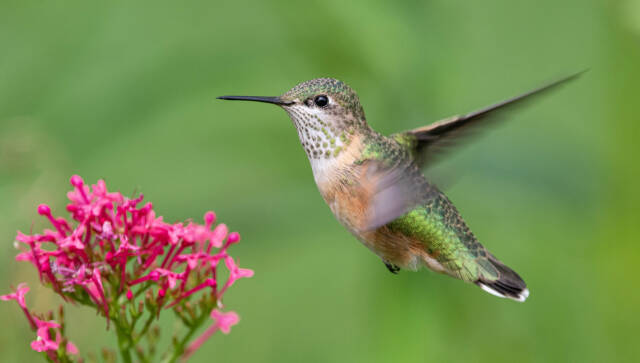
Star hummingbird in flowers
The starry hummingbird is the smallest native bird in the United States and Canada. It is 7 centimeters from the beak to the tip of the tail, about the length of a Bic lighter. Like most hummingbirds, its diet consists of nectar and small insects. They are named after the Greek muse Calliope, and the previous genus name meant "little star." She is known for her mesmerizingly beautiful voice. The call of a hummingbird might not fit that perfectly, but is more like a high-pitched buzz.
4. Calypte costae – 7.6 cm/3.05 g
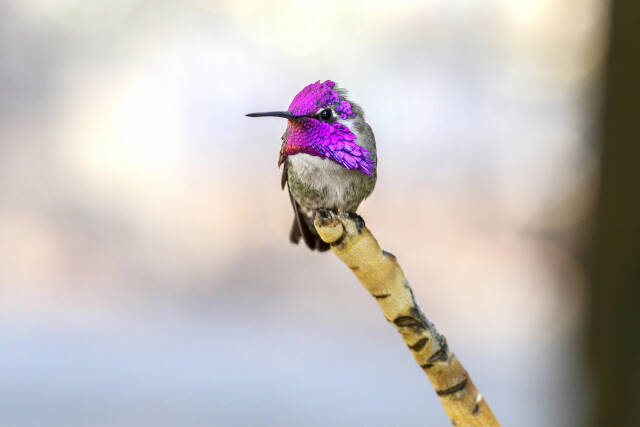
Beautiful male Corrie's Hummingbird on a branch
The last hummingbird on our list is perhaps the most striking, with males of this species having bright purple caps and throats that make them look like a particularly angry plum. This vibrant plumage plays a dramatic role in their courtship displays, dazzling nearby females as they carefully angle themselves so that sunlight reaches them. They can be found in the southwestern United States and Mexico.
5. Dicaeum erythrorhynchos – 8 cm/4 g
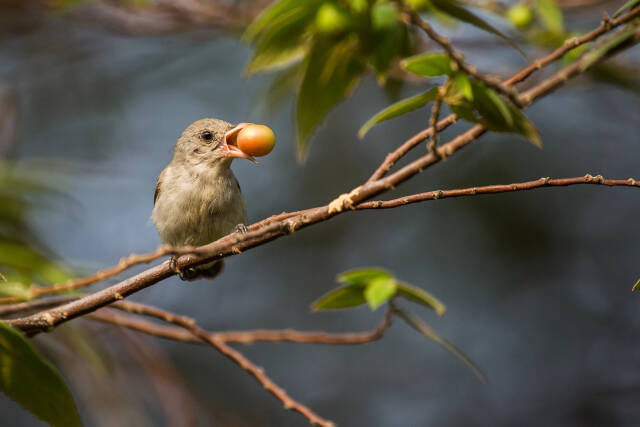
Flower-billed Flowerpecker holding fruit in its beak
Less vigorous but almost as small is the Pale-billed Flowerpecker, an olive-green bird that lives in the Indian subcontinent. It has a mutually beneficial relationship with the mistletoe species Dendrophthoe falcata. In return for food (mistletoe berries), the bird both pollinates the plants, carrying pollen from one flower to another, and aids in seed dispersal by expelling the seeds intact after digestion.
6. Brown broad-billed warbler ( Smicrornis brevirostris ) – 8 cm/6 g
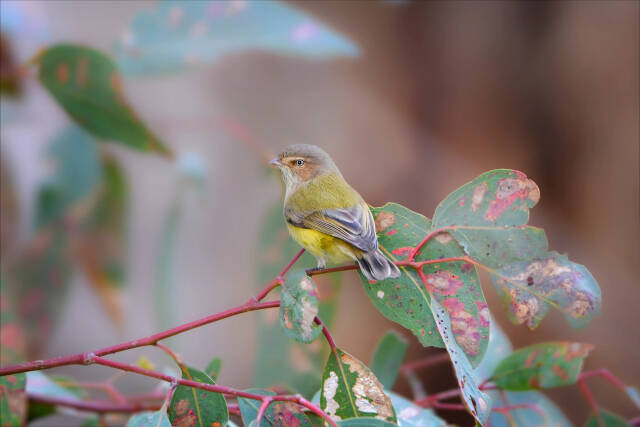
Australia's smallest bird, the Lesser Brown-billed Warbler, perches on a branch
The aptly named smallbill is an unassuming gray-yellow bird with an exceptionally stubby beak. It is Australia's smallest bird. The Brown Broad-billed Warbler is primarily insectivorous, feeding on beetles and flies, but sometimes also eats seeds. Only 6 grams, equivalent to the weight of a pencil.
7. Anthoscopus minutus – 8cm/8g
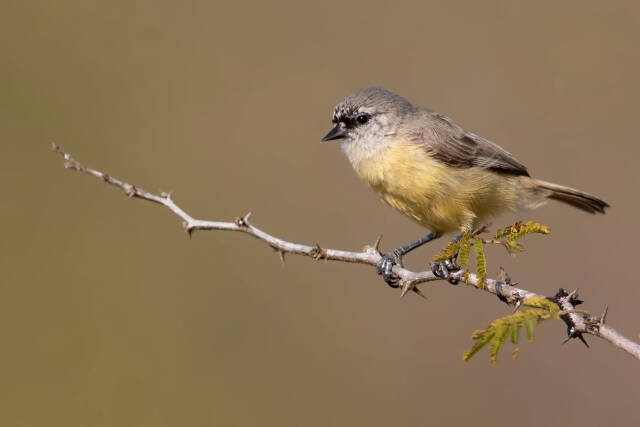
Southern Sparrow perched on a branch
Found in southern Africa, this petite passerine is known for its nests made of soft materials such as spider webs, wool and plant fibers.
The nests are designed as hanging ball sacks dangling from tree branches. They also have multiple entrances, an open "fake entrance" that leads to an empty room, cleverly constructed to deter would-be egg thieves, and a smaller real entrance that opens up once the southern finches enter or leave. , it will close.
8. Daiju ( Regulus regulus ) – 9cm/5.7g
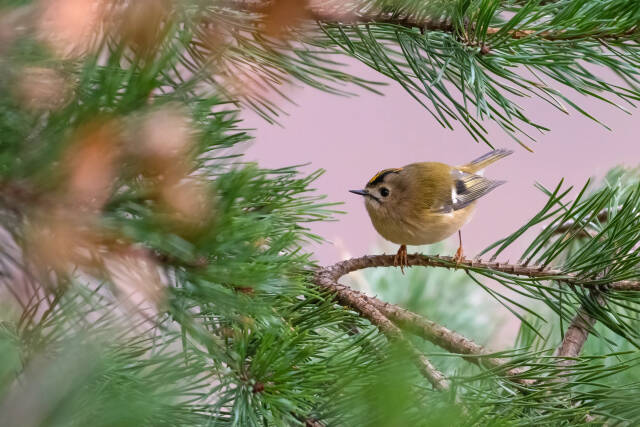
Daisy chrysanthemum on a pine tree in the Scottish Highlands
Next up is Britain's smallest bird, known in European folklore as the "King of Birds" (hence the scientific name regulus, meaning king). This may be due to the bright orange/yellow feathers on the top of its head. Although it weighs less than a postcard, females of this species can lay up to 12 eggs in a clutch, about one and a half times their body weight.
9. Regulus ignicapilla – 9.3 cm/5.5 g
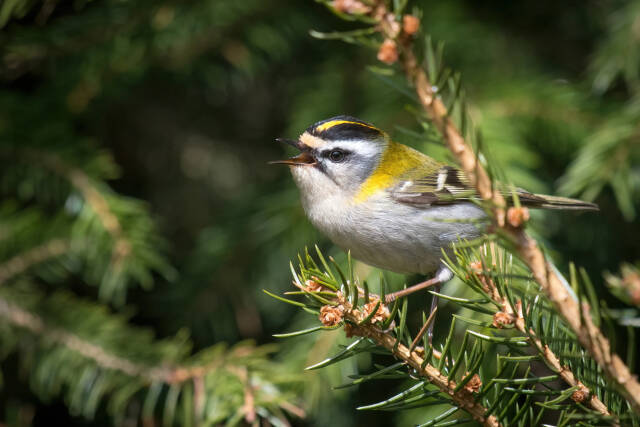
Fire Crown Daiju
Similar in appearance to Daiju, but even rarer is the Fire Crown Daiju. In addition to their yellow crowns, they have black eye stripes and white eyebrow or brow stripes. Their overall color is also brighter than golden crowns. They have a similar regal name, Regulus ignicapilla, which means (roughly) the fire-topped little king. They can be seen in the UK, but can also be found across much of Europe and parts of northwest Africa.
10. Pardalotus punctatus – 9.5 cm/6 g
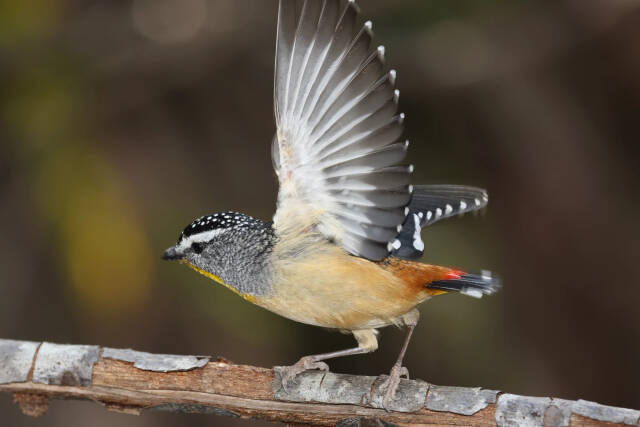
Male spotted-winged honeyeater spreads wings
This colorful little bird is Australia's smallest bird after the brown broad-billed warbler and is also known as the headache bird. This is because its characteristic repetitive call may irritate listeners due to its ruthlessness during the breeding season. It can be found high in the canopy of eucalyptus trees, searching for small insects in the leaves, its favorite being insects of the family Collapsidae (psyllids).
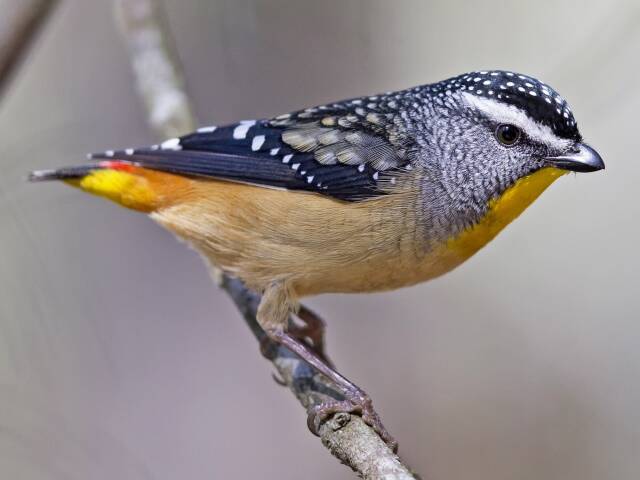
Spot-winged Honeyeater
animal tags:
We created this article in conjunction with AI technology, then made sure it was fact-checked and edited by a Animals Top editor.